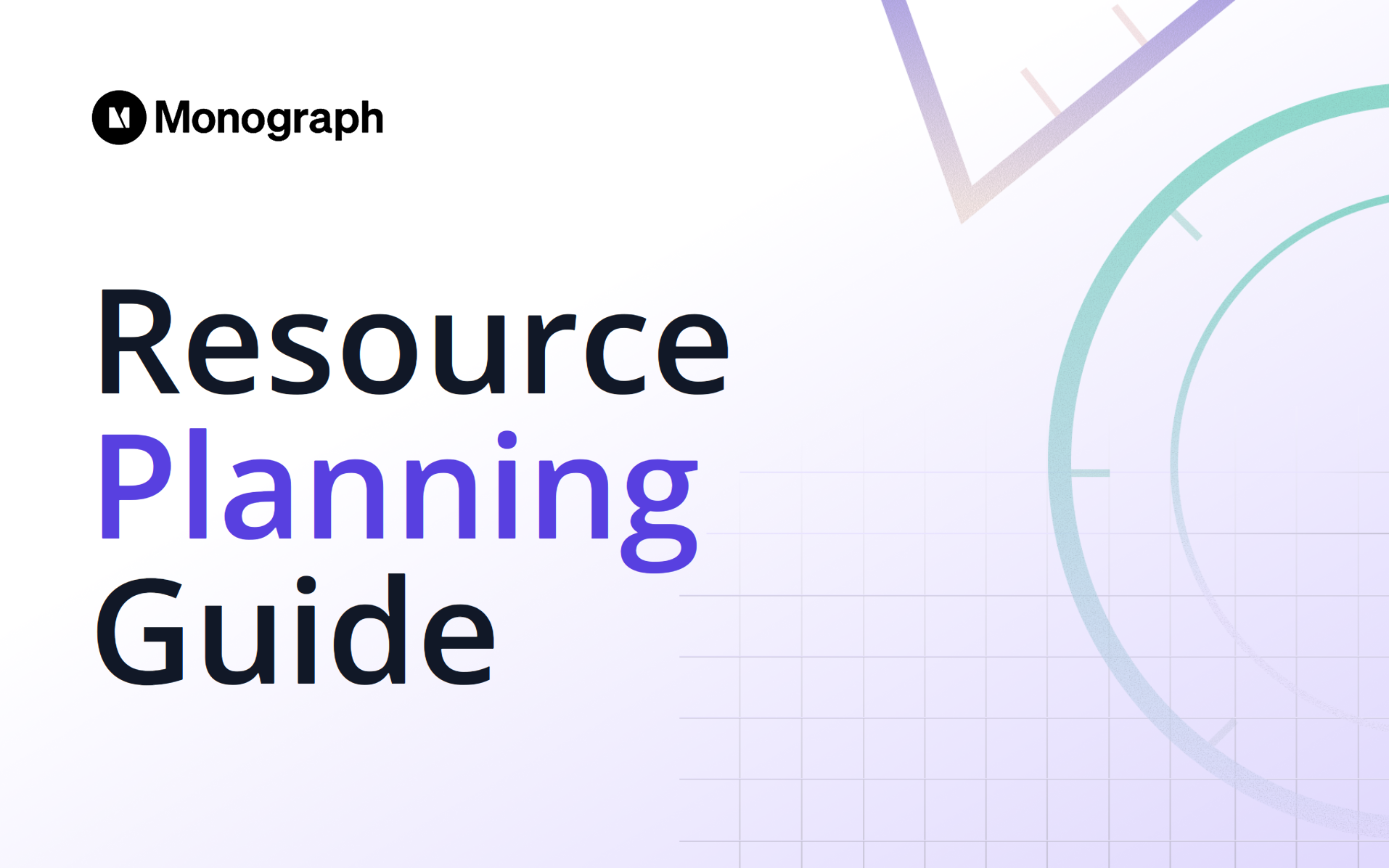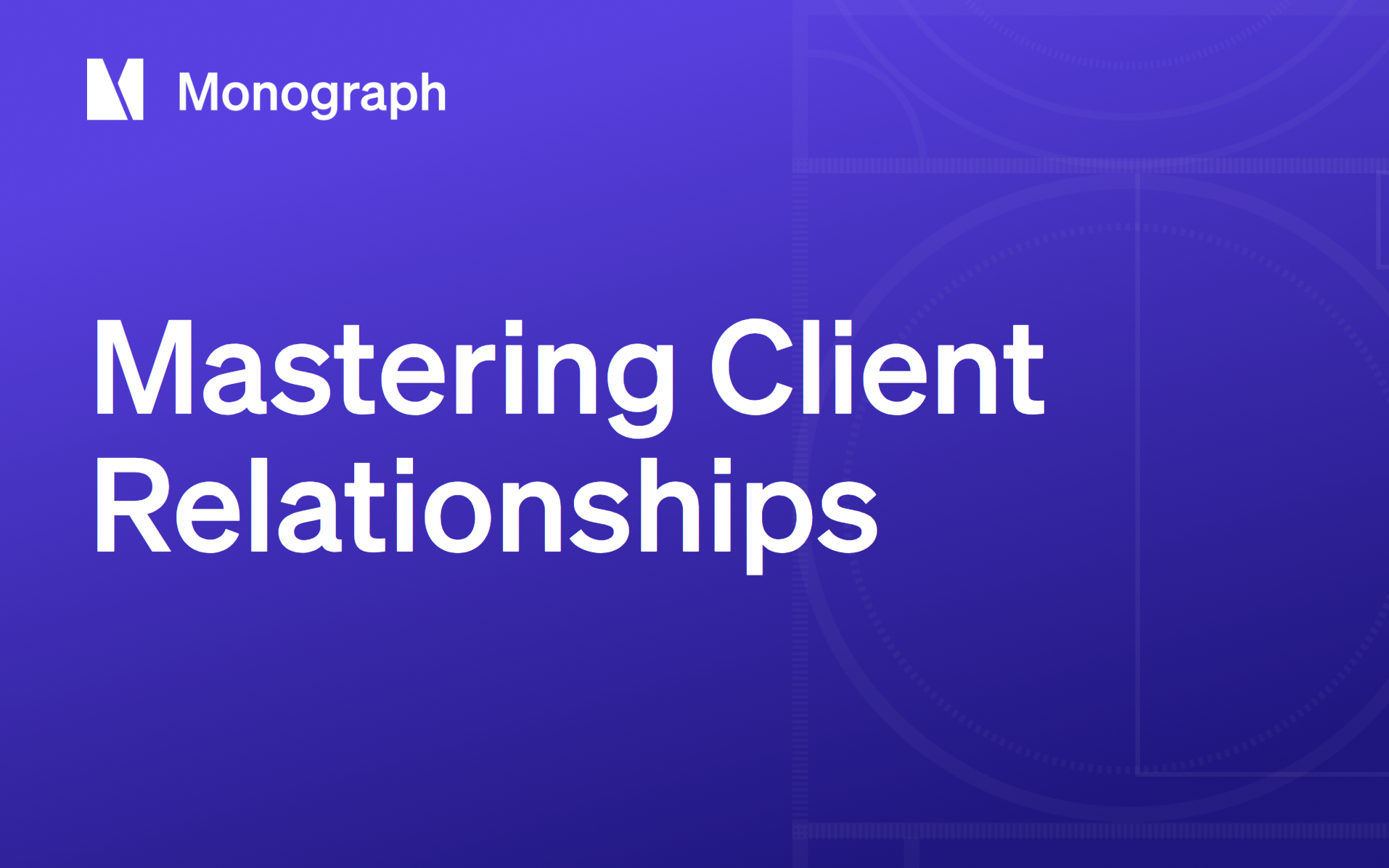Contents
Fifty-six percent of the A&E principals we speak with admit they can't see their staffing needs more than a week out. When your pipeline shifts—even slightly—that blind spot triggers a frantic scramble: reactive hiring, blown budgets, and exhausted teams who start counting the days to their next job.
Engineering resource planning solves that problem. It's the practice of forecasting, allocating, and tracking every resource—people, equipment, software, and dollars—across your projects so the right help shows up at the right moment. Do it well and you trade chaos for confidence: predictable delivery dates, balanced workloads, and margins that let you pursue the work you actually care about, not just the jobs that keep the lights on.
This guide gives you a practical system built from running projects, not theory. You'll get a one-page, 30-minute quick-start checklist you can knock out before the next status meeting. You'll learn a five-step quarterly planning cycle that scales from a two-person studio to a 200-engineer practice. You'll see a head-to-head software comparison so you can stop toggling between spreadsheets and half-baked tools. And you'll get a forward look at AI scheduling, distributed-team planning, and ESG compliance reporting: trends already reshaping how firms win and deliver work.
If you're tired of Monday morning surprises and want a repeatable way to answer, "Do we have the capacity?" keep reading. We'll start with the rapid-fire checklist, build out the full roadmap, compare the tools, and close with a framework for continuous improvement—so the plan you create this quarter doesn't collect dust by the next.
Quick-Start Checklist: Build a One-Page Resource Plan in 30 Minutes
You already know the feeling: Monday morning, three active jobs, two proposals in limbo, and no clear view of who's free next week. When the phones keep ringing, you don't need another bloated template; you need a one-page dashboard that shows where every hour and dollar is headed.
Think of this checklist as a rapid sketch model: simple enough to finish before your first coffee refill, sturdy enough to stand until the full structural set is ready. Start the timer and work through these five steps:
Define your purpose: Open a fresh sheet (Google Doc or whiteboard) and write a one-sentence definition: "Forecasting, allocating, and utilizing resources to meet project goals." Pinning down the purpose keeps every later decision honest.
Gather your inputs: List active and pending projects, the roles or skills each needs, every team member's weekly capacity, and immovable milestones. Keep it short: project code, hours required, due date. Pull numbers from your latest utilization report or, if that's missing, the gut-check estimates living in your head.
Create your integration process: Drop those inputs into a single table. Rows = people or equipment; columns = weeks. Color in committed hours. A simple grid beats scattered spreadsheets every time, and you can refine the math later with centralized data that reduces fire drills.
Flag project risks: Scan the grid for overloads (anything above 80% capacity) or talent gaps. Mark them red. Add a yellow flag where capacity is unclaimed: idle time is just as dangerous when margins are thin. Firms using integrated resource planning report 66% fewer budget overages compared to spreadsheet-driven approaches.
Document and share: Save the file with the date, lock editing rights to you and one backup, then share read-only access with project managers. Post a link in your team's chat so no one hunts through email threads.
Maintaining the page takes five minutes each Friday: roll dates forward, adjust hours logged, clear obsolete flags. As your practice matures, this single sheet becomes the foundation for the quarterly forecasting cycle ahead, complete with MoneyGantt™ visuals and scenario planning. For now, enjoy the calm that comes from seeing the whole picture before the next project kicks off.
Five-Step Engineering Resource Planning Roadmap
Quarterly capacity planning works when it runs like a closed-loop control system: set the target, measure, adjust, and repeat. The five steps below turn that theory into a rhythm you can keep, whether you manage ten people or two hundred.
Step 1: Set Objectives & Gather Data (Monthly, COO)
Start by interviewing project leads, finance, and HR to uncover upcoming work and business goals. Treat these sessions like a design charrette: rapid, collaborative, and focused on facts over opinions. You need confirmed and proposed projects, role and skill requirements, current capacity by person (not just by job title), and key delivery dates.
Centralize everything in one place. Scattered spreadsheets erode trust; a unified plan keeps everyone looking at the same numbers. Teams switching from Excel to purpose-built platforms report 50% less time spent on administrative tasks. Your KPI here can be the percentage of active projects with baseline capacity recorded. Track it with Monograph's project dashboard and aim to reach a high percentage, such as 90%, as an internal target for effective project control.
Step 2: Forecast Demand (Quarterly, Project Managers)
Break each project into phases, then decompose phases into tasks. For every task, assign the role, hours, and timing it needs. When uncertainty creeps in, lean on probability-weighted pipeline data and visualize it with MoneyGantt™: the signature view that shows time and dollars in one glance. Flag pauses like permitting, client review, and weather windows as explicit gaps so you don't book people who will end up idle.
Cost and timeline estimates ride on this forecast. Tie task durations to historical actuals where you can: this forms the backbone of accurate resource allocation. The troubleshooting cue: if the plan balances only when every engineer is at 100 percent, you've ignored buffer capacity. Dial workloads back to 80–85 percent so the inevitable surprise doesn't crush your schedule.
Step 3: Allocate Resources (Bi-weekly, Resource Manager)
With demand mapped, you can place people. Start by matching skills to tasks: nothing tanks morale faster than assigning a bridge engineer to façade detailing. Then scan for load balance. The quick check is a practical metric: try dividing skills-match hours by total hours assigned to get a sense of alignment. As a rule of thumb, keeping this ratio above 0.8 can suggest that people are working within their strengths and aren't sitting idle, though this is not a standardized resource management metric.
Watch for the common pitfall of leaning on your top performers until they crack. A bi-weekly rebalancing meeting solves it: drag-and-drop assignments in Monograph's resource planner, preview utilization charts, and redistribute. The result feels less like crisis triage and more like tuning a well-engineered structure. Firms tracking resource allocation in real-time achieve 4x faster billing cycles.
Step 4: Monitor & Analyze (Weekly, Ops)
Plans age fast, so check reality every week. Pull logged hours, compare them to the plan, and surface variance. Industry sources recommend schedule and cost indices, and monitoring the variance between planned versus logged hours, as essential for exposing scope creep early in engineering projects.
Real-time dashboards (think MoneyGantt™ or your tool of choice) keep the data visible without extra work. The snag is timesheet lag. If hours aren't entered by Friday, Monday's report is fiction. Solve it with Monograph's mobile time tracking and a firm-wide rule: no timesheet, no PTO approval. It's blunt, but it works.
Step 5: Iterate with What-If Analysis (Quarterly, Leadership)
Stress-test the plan before the market does it for you. Spin up scenarios: "What happens if the hospital project slips two weeks?" or "Can we absorb a 15 percent scope bump without overtime?" Monograph's capacity forecasting makes this painless, but spreadsheets work if you're disciplined.
Although not a commonly recommended KPI, some organizations may choose to track the number of actionable scenarios generated each quarter for internal purposes. Leadership may find value in reviewing these scenarios, optionally alongside hiring or deferment discussions, as an organization-specific practice. Document lessons learned, roll them into next quarter's Step 1, and you've closed the loop.
The beauty of this roadmap is its repeatability. Follow the cadence, watch the KPIs, and you'll shift from reactive staffing scrambles to confident, data-driven planning: exactly what effective capacity management requires.
Engineering Resource Planning Software Comparison Guide
Before we compare tools, let's answer the first question every firm wrestles with: do you build a custom resource-planning spreadsheet, or do you buy purpose-built software? A homemade spreadsheet looks cheaper upfront, but the real cost shows up later: in manual data entry, formula errors, and the inevitable moment when the one person who "owns" the sheet goes on vacation. Purpose-built platforms cost money every month, but they deliver automated data pulls, permission controls, and audit trails from day one. If your staff cost more than the software, buying almost always wins.
Once you're past the build-vs-buy debate, evaluate each platform against criteria that matter to engineering work, not generic project management. Adapt evaluation frameworks to capture the realities of overlapping phases, skills-based staffing, and strict budget controls typical in A&E firms.
How the leading options stack up
The table below summarizes five platforms you'll hear about most often. Capabilities are drawn from publicly available product pages and user documentation, with engineering-specific features highlighted where vendors make them explicit.
A single checkmark doesn't tell the whole story. Asana excels at task management but relies on integrations for budgets, while Saviom offers deep scenario modeling yet may feel heavyweight for firms under 50 people. Use the matrix as a conversation starter, then run vendor demos to confirm how each feature works for your mix of design, field, and back-office staff.
Five vetting questions that surface deal-breakers
Consider these critical questions during your evaluation process:
- How does the platform map engineering phases (schematic, DD, CA) or discipline-specific stages to resource demand?
- Can it model separate rates for principals, senior engineers, and contract specialists without spreadsheet gymnastics?
- What happens to your data if you need to roll back a schedule by two weeks—does the system recalculate budgets automatically?
- Which accounting or HR systems already integrate out-of-the-box, and what's the real cost if you need an API build?
- How long before project managers can self-serve reports without calling IT?
The right answers differ by firm, but you'll spot red flags quickly. Any vendor that dodges the "what if we slip two weeks" question probably can't handle real-world design changes.
Implementation: plan for the messy middle
Even the best software fails when firms underestimate rollout work. Budget for additional rollout costs such as data cleaning, training, and process shifts, which can significantly add to first-year expenses beyond the license fee.
Keep implementation lightweight by migrating only active projects first and archiving history later. Train people in small groups so power users emerge naturally and can help their colleagues. Set up a 90-day "parallel run" where old spreadsheets exist solely as a safety net, then turn them off completely once everyone trusts the new system. Engineering firms following this approach report 25% growth in operational efficiency during their first year.
Resource planning never lives alone. Time tracking feeds payroll, budgets roll into invoicing, and phase completion triggers CAD hand-offs. Every manual transfer between systems erodes trust and burns billable hours. Short-list tools with proven connections to your finance, HR, and design systems, or be ready to fund custom APIs.
Choosing software isn't about chasing features. It's about finding tools that work the way engineers actually work. Start with the matrix, pressure-test with the five questions, and insist on integrations that let designers focus on design while the numbers update themselves.
Future Trends & Continuous Improvement Framework
Resource planning in A&E firms is changing fast. Three shifts are already affecting how you staff and schedule projects:
AI-driven scheduling and predictive analytics catch conflicts before you do. Modern systems flag bottlenecks and recommend hiring decisions weeks ahead of traditional planning cycles, turning reactive scrambles into strategic moves. Monograph's AI-powered capacity forecasting exemplifies this trend.
Hybrid, distributed teams are standard now. Cloud-based dashboards mean your designer in Chicago sees the same backlog forecast as your engineer in Manila. Time-zone-aware planning tools run on infrastructure that's become essential, not optional.
Automated ESG and compliance reporting is emerging as a near-future capability in practice management systems, with sustainability metrics increasingly expected to flow directly from project data to executive reports, reducing the manual effort when RFPs require environmental impact data. Industry commentators anticipate this integration becoming standard in the coming years.
Trends won't solve capacity problems without consistent process. We use a simple 90-Day Improvement Loop:
Review KPIs: Pull utilization, variance, and cost data the first week of each quarter.
Retrospect: Spend one hour with project leads asking, "What bottleneck hurt us most?"
Refine the plan: Adjust forecasts, update skills matrices, and build in new buffer rules.
Repeat: Schedule next quarter's session before you leave the room.
Block a standing quarterly capacity review on your calendar now. Maintaining consistency in resource-planning cycles is important for momentum—however, failures in resource-planning systems are usually due to broader issues such as ineffective scheduling and poor resource management.
Action steps for today: choose three core KPIs, schedule a 30-minute retrospective with stakeholders, and document one process change you'll test next quarter. Keep iterating, and your planning system stays as flexible as the projects it supports.
Monograph Success Stories
We've worked with 1,800+ firms and 13,000+ architects and engineers. Unlike PE-owned competitors focused on short-term profits, Monograph invests in long-term innovation. Founded and led by practicing architects who understand your daily challenges, we're venture-backed with a vision for continuous product development, not just cost optimization.
Cresa Design and HDG Architecture both switched to Monograph from scattered, legacy systems:
"Before Monograph, resource planning was a nightmare. We had spreadsheets everywhere, couldn't see capacity beyond next week, and constantly scrambled when projects shifted. Now we can forecast 3-6 months out and actually plan for growth instead of just reacting to chaos. The MoneyGantt™ view shows us exactly where our resources are going and when we'll need to hire."
— Sarah Chen, Operations Manager, Cresa Design
"Monograph helped us to not be constantly struggling with deadline after deadline. The ability to track projects has allowed us to know what's expected in the coming weeks and months. And so rather than jumping from deadline to deadline, we're anticipating several weeks or months out what's coming down the pike and what projects or phases need to be completed."
— Dave Buescher, Chief Operations Officer, HDG Architecture
Sarah and Dave got tired of managing by gut feel. Monograph's integrated capacity planning gives them consolidated data and predictable workflows.
Stop Guessing. Start Planning Your Resources with Confidence
You can't run a profitable A&E practice when resource data lives in scattered systems. Every day you spend piecing together utilization rates from Excel, project capacity from guesswork, and cash flow from manual calculations is another day your competitors gain ground.
Invest in resource planning software that understands A&E workflows. Move from reactive staffing scrambles to proactive capacity management. The right platform transforms scattered data into actionable insights: showing you which projects need resources, which teams are overutilized, and when you'll need to hire.
Unlike generic project management tools that claim to work for everyone, Monograph is built specifically for architects and engineers. Our MoneyGantt™ feature combines traditional resource planning with financial visibility, so you can see both capacity and cash flow in one view. Small A&E firms using integrated practice management report 2.5x faster payment collection compared to manual billing processes.
Pick a platform built for architects and engineers. Pick Monograph.
Frequently Asked Questions
What are the most important metrics for engineering resource planning?
The essential metrics for A&E resource planning fall into three categories: capacity (utilization rate by role, available hours vs. committed hours, skill gaps), profitability (project margins, hourly rates vs. actual costs, consultant spending), and timing (project pipeline, milestone dependencies, hiring triggers).
Start with utilization rate and project capacity: these two metrics alone will reveal 80% of your resource planning issues.
How long does it take to implement resource planning software and start seeing results?
Implementation timelines vary significantly by platform. Purpose-built solutions like Monograph typically take 2-4 weeks to get fully operational. The key is choosing software that integrates with your existing workflows rather than forcing you to rebuild everything.
Will resource planning software integrate with our existing QuickBooks setup?
Most modern resource planning platforms offer QuickBooks integration, but the depth varies considerably. Look for two-way sync that eliminates double-entry: your time entries should flow automatically into budgets and invoices, and project costs should sync back to update capacity planning in real-time. Monograph's QuickBooks integration handles this seamlessly.





